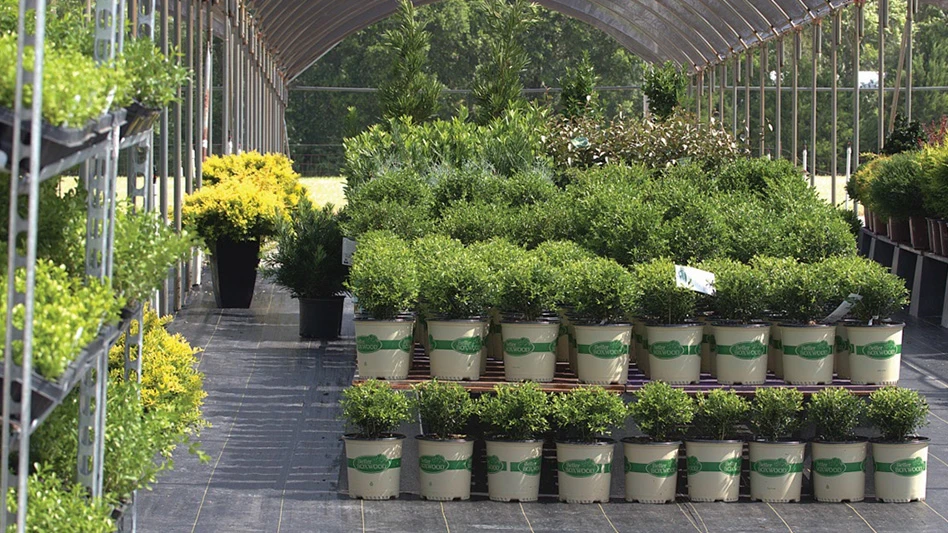
Hand-carrying the 1,200 flats you’ve grown in a 30’ by 96’ hoop house or high tunnel takes more than five hours and adds over five cents to the cost of each flat. This cost is added when the flats are moved in as well as when they are moved out. This assumes that you carry two flats at a time.
There must be an easier way for the small grower with a few houses to reduce labor.
The overhead conveyor system is a fast, economical way to move plants and other materials. It reduces time and labor cost to less than half for the above house. The monorail conveyor system adapts well to existing greenhouse operations. Its low cost and versatility make it a good choice for smaller hoop house operators. The simple straight track system for the above greenhouse is simple to install and has a good payback if multiple crops are grown.
Monorail systems have the best payback in greenhouses with gravel floors where the less expensive cart system can’t be used. They can be set up to serve a range of freestanding houses or facilities at different levels.
The monorail system consists of a slotted tubular rail suspended by brackets from the greenhouse frame. Trollies that ride inside the tube support a plant carrier that is suspended below. It is pushed along manually. Because the system is mounted above the benches or growing area, no additional aisle space is needed.

Just as you would set up a railroad system, a monorail system can be configured to move plants almost anywhere. Typical installations allow movement from the propagation area to the transplanting area and the growing area. From there, they can be moved to the shipping area. Some growers also install a rail to the storage area to allow for movement of growing mixes and containers.
Installing switches at key rail intersections allows carriers to move anywhere. Switches can be two-way to divert the flow from the main line onto a spur that serves one of the hoop houses. The switches can also be three-way to direct the movement from a greenhouse in either direction. For areas where the rails intersect at right angles, a cross will allow four direction movement. In purchasing a system, make sure the switches are easy to control and provide positive lock.
Trolley carriers can be made in almost any size to fit the type and size of flat or pot carrier you use. A typical carrier for 1,020 flats would be about 20 inches wide. The length and number of shelves will determine the number of flats or pots it will hold. Lengths of 4-6 feet allow it to be maneuvered easily through doors and around corners.
The location of the carrier in the greenhouse and the size of the plants determines the number of shelves. Usually, three or four shelves are used on carriers that ride above the benches. If the crop is grown on the floor, an additional shelf or two could be added.
Carriers should be designed with easily adjustable shelves to handle different size containers and plants. Plywood, expanded metal and sheet metal are common shelf surfaces. There are carrier designs to handle hanging baskets. Some systems allow two or more carriers to be hooked together so more plants can be moved at one time. This is usually done when long distances are involved.
When designing carriers for a monorail system, consider how the rail will be supported. A carrier with 40 5-pound flats on it will weigh more than 200 pounds. Determine if the greenhouse frame or hoops will be able to support the extra load. A band clamp to hold the rail is usually better than just tek screws. Drilling too many holes in the greenhouse frame will weaken it.

Explore the April 2022 Issue
Check out more from this issue and find your next story to read.





